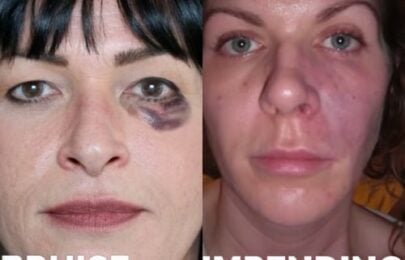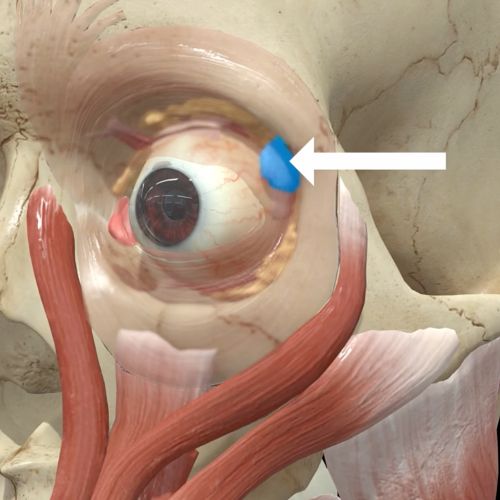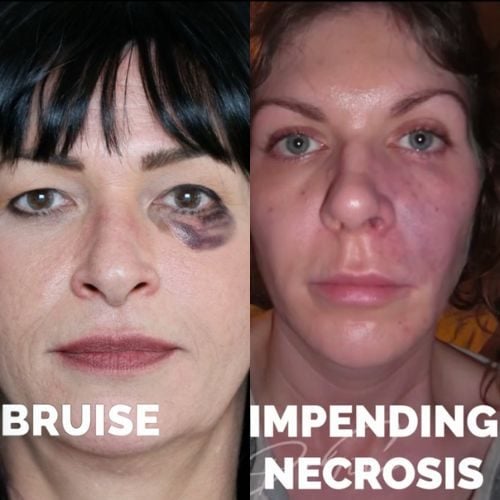- Mail us: support@drtimpearce.com
CPSA Consultation on Cosmetic Standards in the UK.
You may be interested
 Dr Tim Pearce
Dr Tim Pearce
Are these the standards that will become regulations that transform the medical aesthetics industry in the UK?
The Cosmetic Practice Standards Authority (CPSA) is a recently set up body that is working with the(JCCP) to set up a voluntary register for cosmetic practitioners. Eventually, this could become compulsory, so the result of this consultation could eventually revolutionise the medical aesthetic industry in the UK.
To take part in the consultation you must respond via your representative body. Here are my personal thoughts on the proposals- please let me know yours via email or social media.
CPSA Draft proposals- Is this the end of the wild west in Aesthetics? from Tim Pearce on Vimeo.
In Summary- non-medical people who have achieved certain qualifications will be allowed to administer injectable procedures under the supervision of a medical prescriber. Supervision means ‘in the same building as’.
Non-prescribers, even if they are medical will have to remain supervised at all times, even if the product being injected is not prescribed.
Everyone will have long periods of supervision (a year from completing a qualification) except for GMC registered doctors on a specialist register that includes injectables.
Full Transcript:
I thought I’d do a quick piece on an important thing that’s happening at the moment, which is there’s a consultation happening by the CPSA, which is the Cosmetics Practice Standards Authority. It’s been set up as part of this plan to improve industry standards through the JCCP so it’s really important.
…Well, it could be really important, it may also turn out to be irrelevant. It also depends on what else happens. Basically what I think it depends on is if the standards that they set up become statute, which is the aim of the CPSA and the JCCP. They would like to form a governing body and decide who can and can’t do medical aesthetics. If they achieve that, these standards are extremely important. But if they don’t do that, they’re probably completely meaningless because I don’t see a lot of point in having voluntary regulation if the public themselves have no idea who the JCCP and the CPSA is.
We’ve seen this already with other organisations that have attempted to improve standards that unless the public cares about it, there’s no incentive for a commercial organization to register with these bodies. Even if they agree in principle with everything they stand for, it becomes a lot more difficult to run your business, a lot more work involved, but you don’t get anything back for it. I hope anyone that watches this from the CPSA and from any organisation that’s attempting to improve standards by getting people to register and be almost voluntary regulated, think what a commercial organisation gets back from it because therein lies the success of a voluntary organisation, voluntary regulation.
Let’s have a look first at these standards. I think my main point being if these do become mandatory and it goes into the statute, everything will change. It may not be as much of a change as some people are hoping, but it will soon be a significant change, so let’s have a look at some of that.
Who am I?
First thing, a little bit about me if you don’t know who I am. I am the medical director of a training company up in Manchester. SkinViva Training is my training company and then SkinViva, the clinic that we run. I work with a group of doctors, and dentists, and anaesthetist. This is on one of our training days. Many of you will recognise Ash Labib, he is not one of my doctors. He was training with us on that day. Then we do an equal amount of training and clinic work, so we only do injectables, which will help you interpret some of what I say.
My focus is entirely on injectables, but we’re equally split between training and clinic work. We do a Level 7 qualification, which is part of the JCCP, and Lee Cottrill, one of my directors, is helping with some of the work with the JCCP although we have no direct affiliation with them other than that. I certainly don’t and everything I’m saying is purely from a clinician’s perspective, so hopefully, that will help you interpret what I’ve got to say on this topic.
Who are the CPSA?
Interestingly when I had a look at the CPSA website, they put some pretty bold language on the home page. At the moment, they are not the people who are deciding who can and can’t inject in medical aesthetics, but that’s basically what they say off the bat:
“We set the standards that anyone who wishes to perform these treatments must meet, whatever professional background they are from.”
That is at the moment categorically not true, They are setting standards, but there’s nothing about a must in law. They would like to be the people who would do that. I would also probably like that, but unless it becomes statute, will it actually make a big difference?
Who are the CPSA
Firstly to understand where they come up with their opinions, they have a working group as they call it and they have a lot of dermatologists. Though this gives an idea of professional background we have no idea how much aesthetics they actually do.
Four dermatologists wrote the toxin standards form, which they’ve released. There are two plastic surgery trainees, two aesthetic nurses, and one beauty therapist who’ve all contributed. For the dermal filler group, it’s a similar spread of four dermatologists, one plastic surgery trainee. They’ve got one purely aesthetic doctor, beauty therapists, and noticeably no nurses and no dentists. This is gonna sway the kind of advice you get from people and that may or may not be a good thing.
Let’s think about what they would hope to achieve. What I think I would like to see them achieve, which is we need to improve standards in the industry absolutely, but you also don’t want to make standards so high that it actually stops good people from entering the industry. We should realise that medical aesthetics makes a big difference in people’s lives. It’s a valuable thing for people, and therefore we should be in favour of them being able to seek the services that we offer so long as there’s not an unnecessary risk. If these regulations were to become statute and they were too strong, the industry would shrink. Ordinary people who would like to have a treatment that’s relatively safe may be unable to afford it or unable to access it because it was too difficult or too expensive.
The other way around, if it’s too weak then the current situation which we have, which is anything who fancies having a go can have a go as long as they can get insurance. Even that, I don’t think they even need insurance. If you want to offer these services, you can do it. So that’s a terrible situation because as any medical person knows, there are serious risks involved with the treatments that we do. Even if we enjoy a relatively low complication rate for a long time, one day these things happen to even the best injectors, and who knows how bad those rates will be with people who have a completely different attitude to safety?
So we need an increase in the regulation of the system. At the moment, this isn’t it because it’s not mandatory. But if it was to become it, what impact would it have on the industry? That’s the question to answer.
First thing, there are three parts to this consultation that they’ve started, three forms that you can have a look at and get from your website. There is a supervision matrix, and then there’s a paper on what they would like people to do with regard to botulinum toxins, dermal fillers, and they also go into other treatments like laser. But my focus today is basically on injectables because that’s what affects most people I train, and that’s what affects my business the most. It’s probably for everyone the most important component of all this. The first thing is they want to decide is who do they actually want to be supervised? Definition of supervision is important:
Supervision means that the person supervising you is immediately available on the premises, so you’re geographically tied to the place that you’re responsible for. That’s really important because it means you won’t be having a prescription on one day and then two weeks later, the procedure happens somewhere else in the country.
The next definition is direct supervision, and those are mainly for people who are developing and training, but the idea that you should be directly observed for each procedure.
They obviously have the definition for the prescriber regulated by a professional body. I don’t think you can be a prescriber without being part of a regulatory body but that is their definition.
Then you have independent practitioners: These are GMC regulated doctors who have as part of their training completed nonsurgical cosmetic procedures. I’d really like to know who those people are because as far as I’ve known the NHS, you can’t provide these treatments (so even if they do some training they will have no experience), so I don’t know if they’re referring to dermatologists or plastic surgeons. It’s certainly not part of GP training. GPs aren’t even on the specialist register, so I would be automatically not included in that cohort of people who can inject without supervision.
Although, I could apply through the JCP to join the list of independent practitioners by demonstrating significant experience, and that applies to prescribing nurses as well or anyone of the professional body who’s a prescriber.
Those are the independent practitioners and that’s quite a big thing because to become an independent practitioner there are a lot more hoops to jump through with this current proposal.
We also have supervisors, so those also would be Level 6 and 7 prescribers, and they would be accredited by the JCCP. Then Level 4 and 5 practitioners assessed by the JCCP, so seems like you could be a supervisor without being a prescriber, but you would still, therefore, need someone who’s a supervisor who’s a prescriber. You’d need a prescriber in the building still, so I don’t quite understand how that works if they’re a supervisor, but then not a prescriber because you’ll still need a prescriber there anyway. Affiliated clinicians, those are offsite prescribers agreeing to supervise and manage complications. When you see the next stage when they talk about the Botox and dermal filler standards, there has to be a prescriber on the premises to basically observe any procedure. Not directly observe, but to be in the procedure, so I don’t know who these offsite prescribers or where they would actually come into things because you can’t really be injecting unless you’ve got a prescriber on the premises. So not really sure how that fits in.
Who is to be supervised? Everyone’s first treatment episode is to be directly supervised. Now, the thing I don’t seem to get from this is I presume anyone who’s joining the JCCP has got a qualification that they recognise, so it would be the Level 7 for most people. It seems like after you’ve done your Level 7, on your first treatment episode you’d still need to be observed, directly observed, for that. Only after the person observing you is happy because you then move to operating supervised. All newly qualified practitioners other than once again these GMC specialist doctors. That means a full year of working in someone else’s clinic while they supervise you. That’s a pretty big barrier.
All non-prescribing Level 6 and 7 practitioners, so that’s any non-prescribing nurse, will always have to be supervised. That’s a pretty big deal as well. You’re basically saying to a nurse, “You can’t carry out the prescription that you’ve been given unless the prescriber is still in the building with you.” Which I could possibly understand from the point of view of complications with dermal filler or anaphylaxis, which might happen very rarely with things like hyalase. But for injectables or botulinum toxin, is it really necessary? When all of the other complications and problems that happen with botulinum toxin, pretty much all of them will happen after the procedure by so many days that it’s not relevant who was in the room or who was in the building while they injected the toxin in the first place. That’s something to think about.
Level 4 and 5 practitioner supervision will be defined as per modality, so it depends on what their history is in the background depending on what the HEE level and professional background is. So not very clear on exactly what that means, but they’re going to have to be supervised probably indefinitely.
Regarding what it’s like when you inject either Botox or dermal fillers, they both seem to be the same as far as this paper is concerned. They don’t seem to differentiate regarding the standards, so they’re treating them as a similar risk.
Everyone needs direct supervision for the first procedure. Supervision for a full year for everyone except those GMC doctors who are on the specialist register. Non-prescribers will always require supervision. That’s a biggie. Non-medics will always require supervision by a prescriber regardless of whether or not the product was prescribed. Even if it’s a dermal filler that you didn’t get via prescription, you will still have to be supervised while you inject that. I don’t think many of us would argue that a beauty therapist should have some medical backup if they’re gonna be putting a needle in someone’s face that might block an artery for example.
It’d be interesting to hear some of the arguments against why the person holding the needle is significant if the correct training means that they know how to put the needle in the right place and then they have a medical person to deal with the consequences of that. Is that a safe enough system? What are your thoughts?
My views are supervision for a year is vague first of all, so overkill particularly for medics. I certainly wouldn’t enjoy the prospect of working five days a week for a year while someone supervised me to do three areas of Botox. That seems extreme to me. I would prefer it if they were a bit more precise of what the outcomes of that would be and how many procedures you’d need to do. Call it 50 procedures with a complication rate that matches national averages. Maybe that would be a more precise way of saying that your supervision can end rather than just having a length of time. This doesn’t specify are you working one day a week, or are you working five days a week, or once a month? Who knows? So a bit more precision around that would be helpful.
I would worry that this would put off huge sways of people because who’s going ever even to be able to do it? The transition that we currently have now, which is quite easily whether you can be a medical professional, you can do a training course. You can start practising. You can build up some experience and then you can gradually cut down your hours in the NHS. That’s going to be much more difficult to achieve, and you’re going to need a network of people to support you. Which I like the idea of a network, but I don’t think you’re going to have many people coming new into the industry with a system as a mandatory system. That’s something to think about, what impact it has going forward. Forget about your career now, but 30 years time, what’s going to happen to medical aesthetics where we just have a really small pool of people doing it? Again, I don’t know.
It will be interesting to see how many prescribing nurses trained in aesthetics to Level 7 standard would be allowing a beauty therapist to inject their patients when they are capable of doing it themselves because these people would have gone through quite a lot of training by now if you’ve done the Level 7 qualification. They are still taking the responsibility, but they are allowing someone else to do the injection. I think at the very least, you’d want to be paid pretty well to take on that risk, so we’ll see. But that’s an interesting situation where you’ve got all the skills to do it yourself, and you’re then handing it over to someone else who isn’t as qualified. Endless supervision for all non-prescribers is understandable in many ways, particularly to emergency complications. As I said, I don’t think it’s going to make anyone having Botox any safer that you have to be observed by a prescriber because that no prescriber will know for all the likely things that are going to happen, that they won’t know until it’s kicked in several days later. So it doesn’t seem like that’s going to make things much safer. But the dermal filler one, probably a bit more reason to do that.
Some other comments.
The big one is the supervision matrix. There are some other things, which I thought I would comment on. A mandatory cooling off for Botox they want and for dermal fillers. Then they link in their reasons for that to an article on surgery. The difference between a cooling off period for surgery and a temporary muscle relaxant is vast. Personally, I think that’s overkill. We should all be encouraging people in two minds or people who don’t have any, just learned all the facts to go and think about it. But most people have thought about it quite a lot. If you’ve sent them videos and explanatory information before they arrive, that you have a good consultation with them, they weigh up the risks, and you can tell they’re competent, and they decide they’re going to have the treatment on that day.
Personally, I think that should be an option. I think the idea of making it mandatory just feels like exerting unnecessary kind of drag on the system that patients won’t appreciate, and it will make things very difficult for patients as well if they’ve travelled long distances. So I think it should be an option to treat people straight away, but there should be an emphasis on offering a cooling off period. But this isn’t surgery; this is a temporary muscle relaxant. I don’t think we should over inflate the scale of the decision people are making comparing it surgery. I think it’s too much.
Minimum standards for premises, of course, we should have that. But then they are also talking about people having mobile businesses. I don’t know how you can relate the two. It seems a bit unlikely you’ll ever be able to enforce someone who’s doing home visits having a clean work surface. It’s just pointless. Either you work in a clinical environment, or you don’t. The specific recommendation that you should mix up your Botox in the clinical environment, but then they’re also saying home visits are fine, or mobile business models. That’s not ideal.
Resuscitation equipment, yes I think it’s worth having resuscitation equipment. I don’t think it’s going to save anyone’s life any more than having resuscitation equipment in all restaurants would be helpful. It would be helpful. Probably restaurants, it would be more helpful. More likely are you to choke in a restaurant than to have anaphylaxis from Botox I would’ve thought, but I’m not going to argue with it. Get resuscitation equipment on the list. It’s fine. It’s not a ridiculous expense to enter. They also have a denaturing kit for spilt toxin. I’m not going to argue with that. It just seems like it’s pretty unlikely that some spilt toxin is going to affect a human being. As long as you have normal standards of wiping it up afterwards, and you’re not pouring it down someone’s throat. Even then, you probably wouldn’t notice much of a difference!
The main difference would be a lot of clinical governance work. This enhances say a patient’s safety, and I think it’s a good idea. Most medics are very used to doing this sort of thing. If you have a reasonably sized clinic, you start to want to do it because you want to find out what’s happening to your patients. Appraisals, audits, complaints, complications, record keeping, logbooks, we all do this as part of CPD anyway. Emphasis on care of patient pre and post, all of us should be doing that anyway. Systems for feedback from each treatment episode also a great idea. I think it would be good to have data like that collected. Nothing of this lot is alien to medical professionals. We’re all used to doing it already, so nothing major on those things.
The big thing is as I said supervision matrix changes a lot of things. Broadly speaking, a good idea. It’s overkill as I said on the doctors and nurses who are already injecting, and doing a good job, and have to be supervised for a year. That’s the one I think is going to cause a lot of problems for people and will get a lot of pushback from that. It’s the end of the non-prescriber carrying out procedures on their own. Now, that’s good if you want to keep medics out of the industry or at least want to make it safer for the industry by making sure that they’re really well supervised. But it’s going to negatively impact on the non-prescribing nurse, and I’m sure there are lots of nurses out there who will be very upset by that because they’ll feel like they’re doing safe practice and looking after their patients, and they’ve developed systems around their limitations with prescribing.
If you’re one of those nurses, please let us know.
I’d like to know if you could comment exactly why you feel like your systems are safe and what you’re doing. For example, some people get hyalase prescribed by their prescriber before they do a procedure. They feel like they are confident to diagnose a blocked artery, and they know how to inject it, and dissolve the product if they need to. That’s an example of how non-prescriber is using their medical speciality knowledge, to make a clinical decision and that they have prepared their systems to work around their inability to prescribe in the moment.
What else are you doing that makes you safe? It would be really good to hear some comments like that, and then I could include it in my response if I agree with it.
That’s the last bit, which is what do you do? What do you think about these standards? I’m interested to hear everyone’s point about what do you do if you want to feedback? The consultation ends on the 24th of October and you can reply it via your governing body.
let us know what you think and let me know what you think. I’m very interested to hear what people think because this is far reaching if it becomes statute and probably a blip if it doesn’t. I think that’s what these people clearly want to achieve
So react to this as if it’s going to become law. It’ll help you think more clearly through it and I appreciate your comments. Thank you for your time.
Related Articles
 Bestseller
Bestseller
Avoiding Botox Eye Complications From Dry Eye to the ‘Psycho Look’
September 30, 2025
Avoiding Botox Eye Complications From Dry Eye to the ‘Psycho Look’
 Bestseller
Bestseller
How to Fix a Crooked Smile with Botox
September 25, 2025
How to Fix a Crooked Smile with Botox
 Bestseller
Bestseller
Multiple Causes of Vascular Occlusion and Necrosis
September 23, 2025










